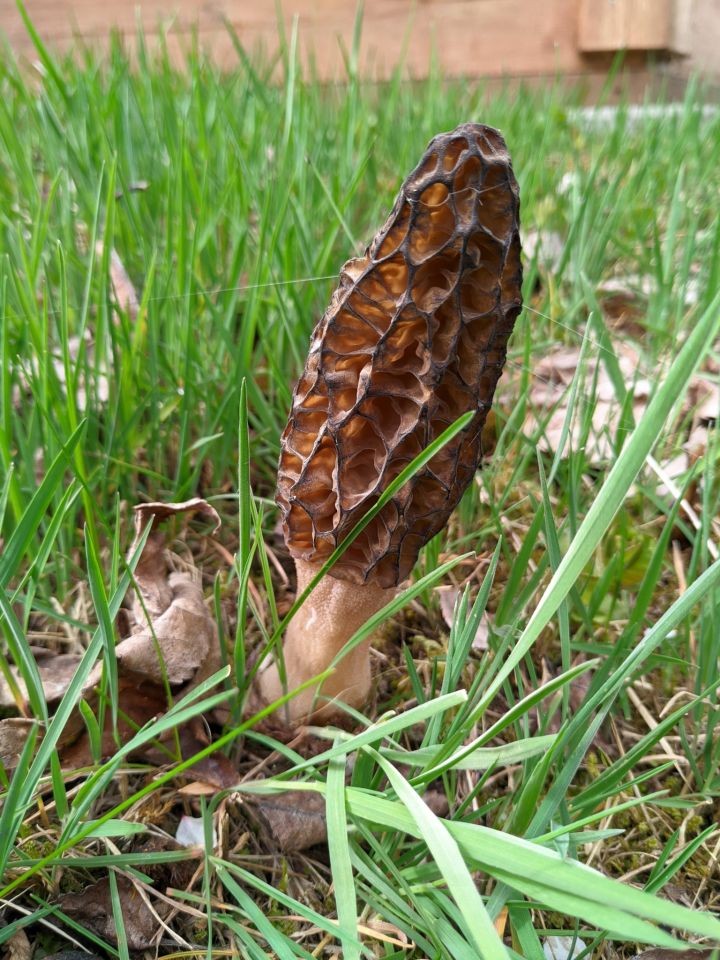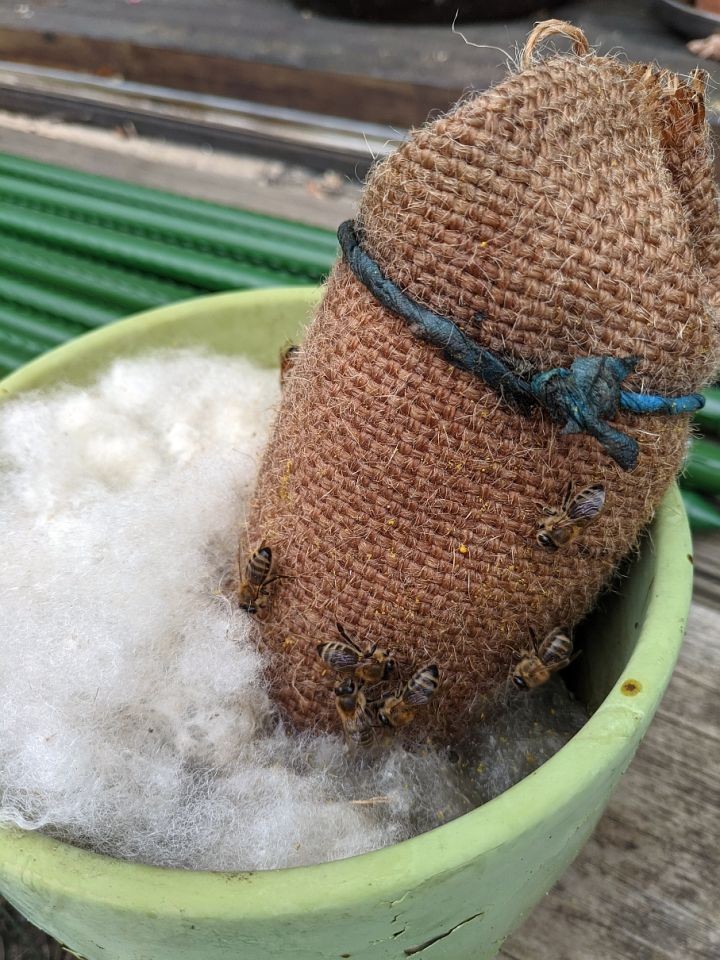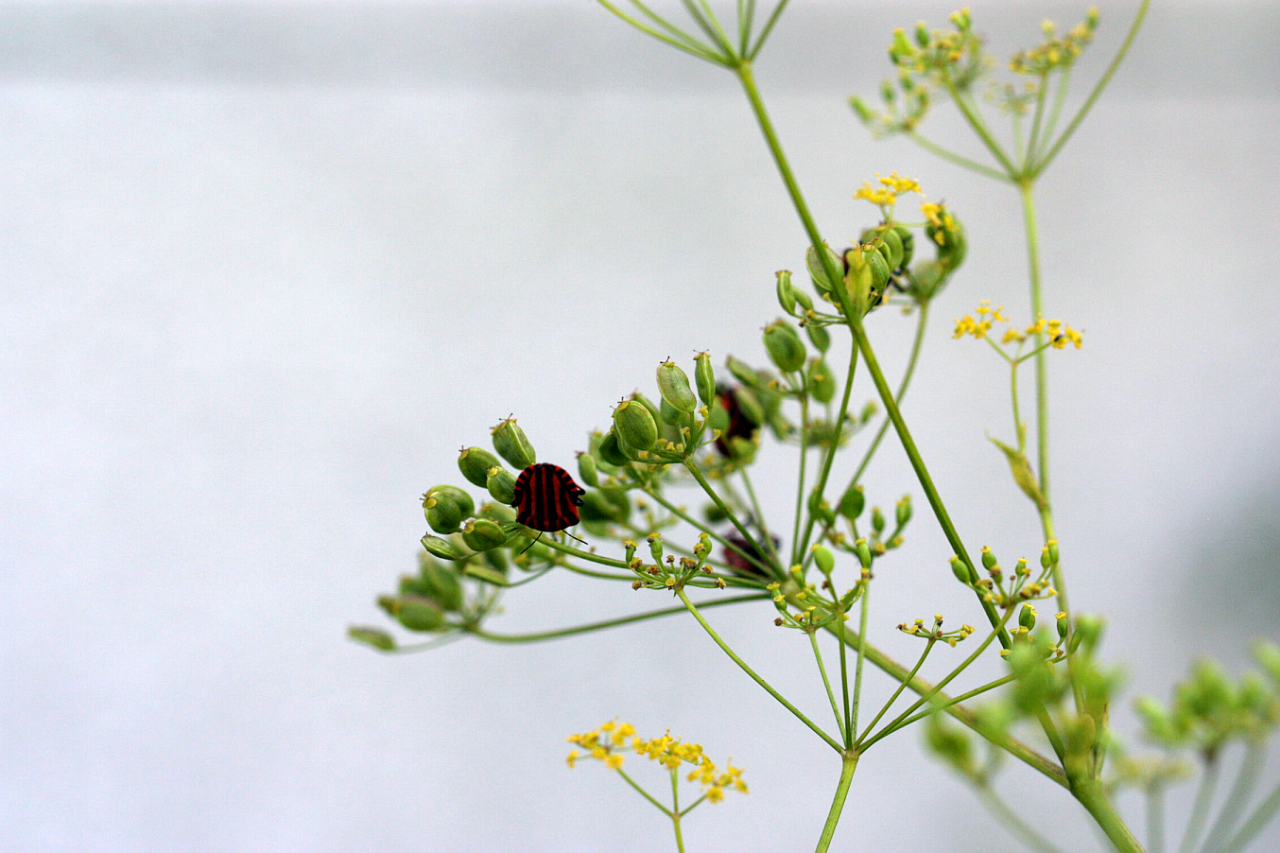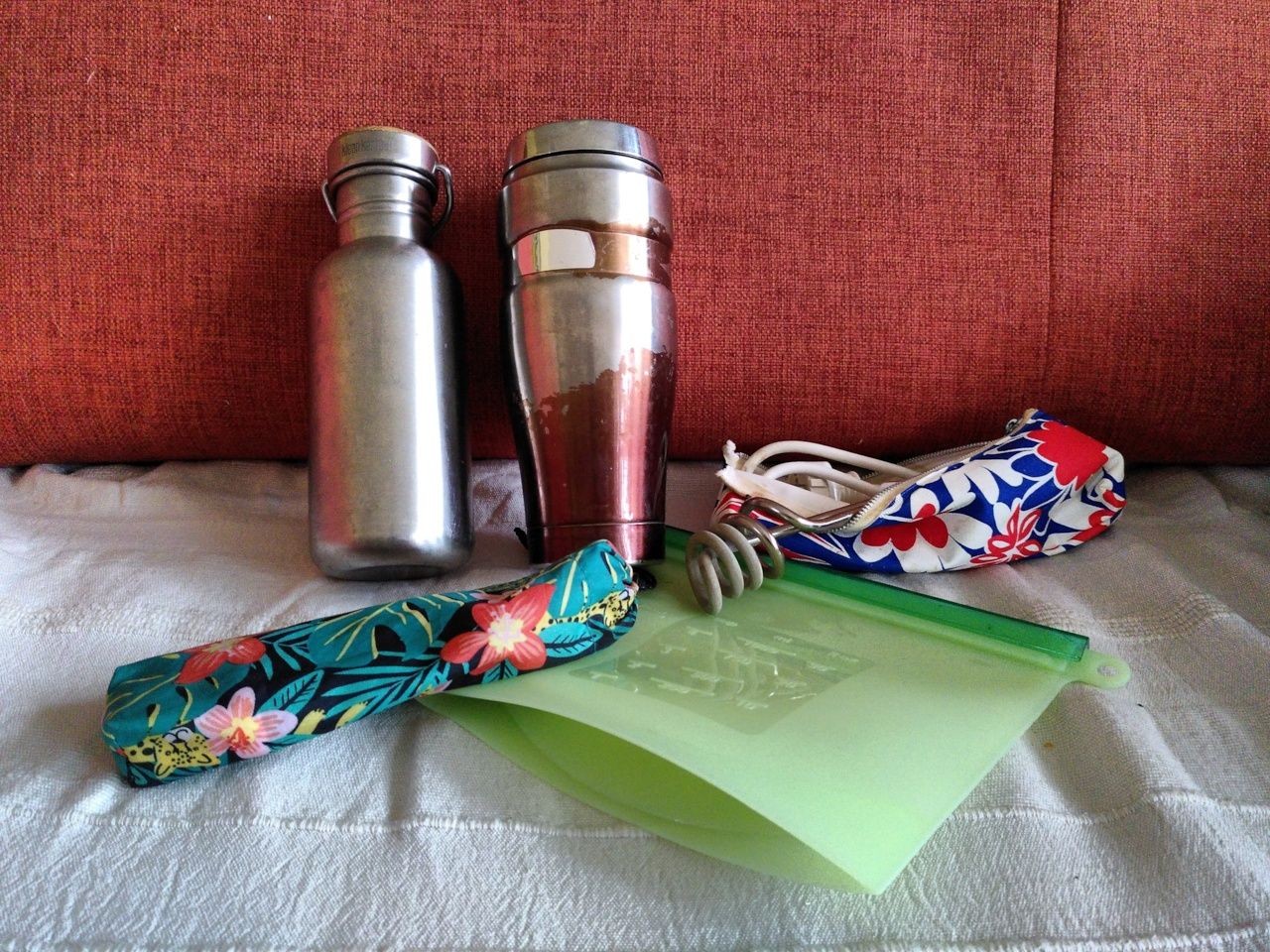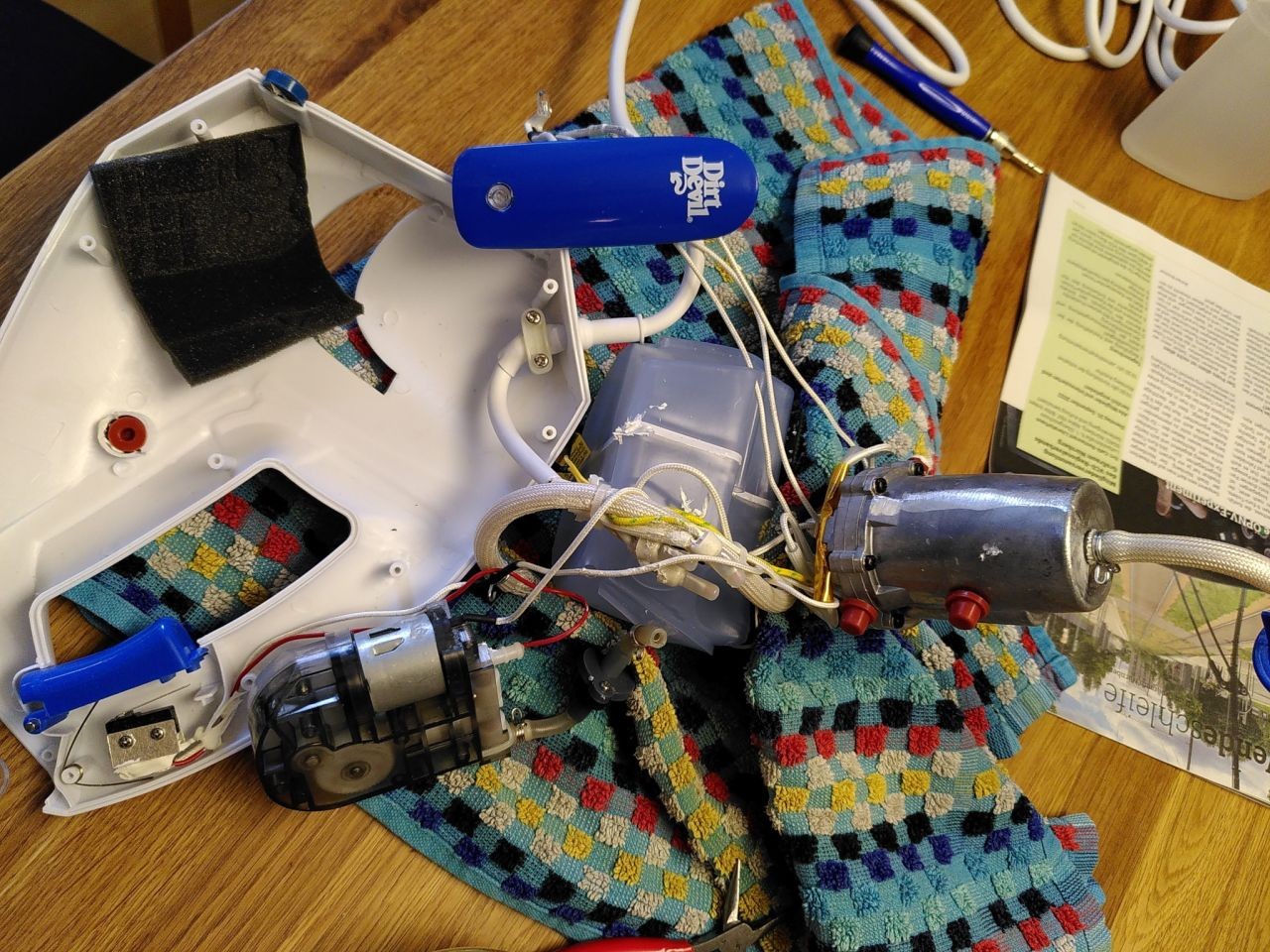I'm off travelling to Lübeck, this time with a little more free time to spend in that lovely little city. With me, of course, the big red suitcase (as usual when travelling for workshop purposes) and the indispensable travel companions.
Those are, in the back: a stainless steel water bottle and my battered trusty coffee travel mug. They serve, obviously, to hydrate me during any gallivantings through the countryside.
The jungle flowery thing in front is my travel cutlery in its little bag (and yes, that is a re-purposed folding umbrella cover that I found on the street - a souvenir from one of my England travels before Brexit happened). It holds a small and large spoon (both from wood) and a fork and knife (titanium, because it's cool and lightweight, and that set of cutlery is also my cutlery when we go biking or hiking.) The bag also contains a mini-salt shaker.
Then there's a silicone pouch - packs small, is completely watertight and thus can carry soup if necessary. Usually it carries the leftovers from restaurant meals that I get, because these days I rarely finish a full portion. A lot of places offer a "small" option these days, but I prefer getting the regular-sized one and having two meals for the price of one. With the pouch, I can be sure that my food is packed up safely, nothing will spill out, I'll enjoy the rest of it the next day and it's not making extra waste because I do not need to ask for a to-go box or other packing material in the restaurant.
And finally, hiding out in the back... that is a travel-sized immersion heater (hence the pouch, which is the original probably vinyl one). I got that on a flea market, they've gotten out of style here. Water kettles have taken over here in Germany as the standard for boiling water many, many years ago already, but I remember that an immersion heater was what we used at home when I was a child.
This one is actually a larger travel-sized one, and I have an even smaller one for when space is tight, sized to hang on the rim of a regular-sized mug. The heater, accompanied by a few bags of herbal tea, is my guarantee that if I need a cuppa in the evening to wind down, I can. Here in Germany, some rooms in hotels or other accommodations will have the complimentary tea-making facilities, but many don't. Some days I don't need the wind-down tea, but sometimes I do, and then it's just nice to know that I can, whatever happens. (Going into the restaurant or guest room or bar would be a possibility to get a cup of tea, but when I need the tea to wind down, I want to have a closed door between me and other people and no human interaction whatsoever. Which would not be the case in a restaurant, obviously.)
The second, just as important potential use of the water heater? Sometimes I have the cold feet problem. The literal one - my feet, before or when going into bed, are so cold that they will not warm up on their own. That means I'll have trouble falling asleep, will not sleep well, and will wake up in the morning with feet that are just as cold as when I got into bed, and it's not fun and no good thing.
Entering the scene to rescue the night: the water heater (because tap water might be hot enough, but then it might not) and the steel water bottle. Tada - instant hot water bottle for bed. In theory, I could wrap the hot bottle in a towel to avoid burns on the feet, but I just keep my distance and pay attention.
Added benefit: If there was sliced ginger in the water bottle before for a bit of flavour, you have nice tangy cold ginger tea in the morning. (I do not recommend leaving lemon slices in, as the rinds will make it bitter.)




